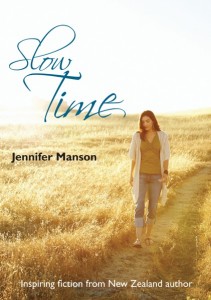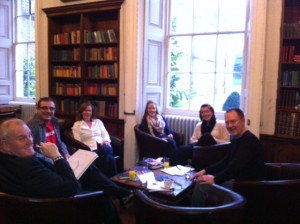What if the thing you thought would take your whole life could be done in ten months, in half an hour a day? What would you do then?
Consider the possibility that everything is much, much, much easier than it seems. I have this theory that everything is easy. It’s just our way of looking at things that makes them seem as they seem.
I’ll get into the history and origins in a minute; first, here are the guidelines of the Challenge itself:
Dream Project Challenge Guidelines
1. Be a busy, successful person, with lots of great stuff happening in your life
2. Think of or recall a Dream Project, one you’ve had shelved for a long time, or never really thought you would be able to do, or perhaps never thought you would have time for
3. Commit half an hour a day to that project – think where you could find half an hour a day, if you really wanted to, if that meant this Dream Project could become reality
4. Do half an hour each day, each day thinking what is the best use of that half hour to move the project forward
5. At the end of the half hour, stop! Experience the magic of what can be achieved in a tiny amount of time, once you allow it
Then rinse and repeat. You can miss one day if you need to, but never two in a row – the magic is in reconnecting with the project daily, even if that’s just talking about it to a friend, a colleague or a stranger…
And then, would you do me a favour?
There are a couple of extra things I’d love you to do, once you get into the challenge itself: first, let me know what you’re up to – I’m collecting stories for a book, and I’d love to hear yours. Email me with your project, and update me with your progress. If you like I’ll add you to the Facebook group, so you can share what you are doing with others.
And second, issue the challenge yourself, personally, to the people you know who have bigger dreams, bigger capacity than they are currently living, people who could do more, love more, change the world faster than perhaps even they know is possible. They might already be doing huge, amazing things, and you know they would love the challenge to do more, in a different way. Send them to this page, and tell them to get going!
So how did it all start?
I was on the train back from the airport yesterday. My husband, daughter and I had spent a few days in Florence looking at art.
Paul was asking me about my New Universe, how it works, and I was describing the idea of projects in the new paradigm, not problem-based, but creating without historic constraints. In the New Universe, as I see it, we create whatever we can dream of, according to positive constraints we set ourselves.
So here’s what I said.
“You need to get people’s minds to shift, to see how things can be easy. If you put people in the same office, working the same hours, they’ll continue to work the same way – you can give them a new job title but nothing fundamental will change. You have to change something fundamental – like tell them they’ve only got half an hour a day to work on a project. Then they’ll do something different.”
“And you’ve tried this, you’ve tried it out on people?”
At this point I got grumpy. “I’ve done it myself, with my books. And I’ve suggested it to people. But no, I haven’t conducted any kind of systematic experiment.” I stared out the train window, feeling inadequate.
And then I thought, why not? Why not conduct a systematic experiment? There are plenty of people I could ask who would rise to the challenge. I’m looking for the examples that push the envelope – what’s possible, not what’s guaranteed. It’s easy, like everything – issue the challenge, let people be inspired by what they themselves can achieve.
So here I am, issuing the challenge. What could you achieve in half a hour a day? Why not try it, see for yourself, and then let the whole world know about it?
Let me know about your Dream Project by email, or message me via Facebook and if you’d like information on how to get personal support, see the Dream Projects page.
Jennifer Manson is an author and coach. Find out about Jennifer’s manifestation, goal-setting and future creation coaching…


